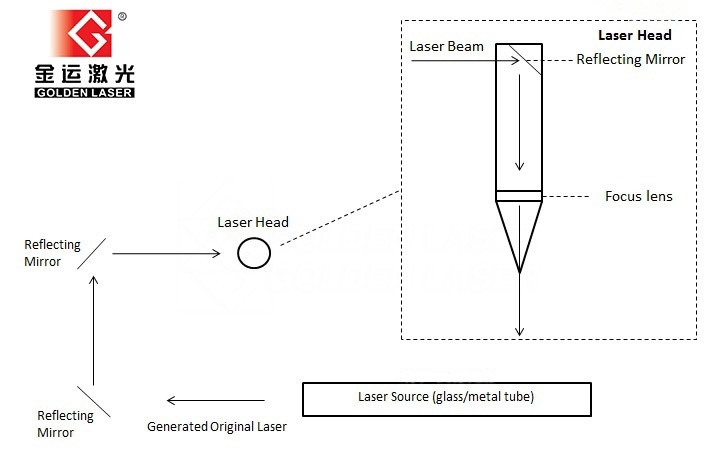Are you new to the world of laser cutting and wondering how the machines do what they do?
Laser technologies are very sophisticated and can be explained in equally complicated ways. This post aims to teach the basics of laser cutting functionality.
Unlike a household light bulb that produces bright light to travel in all directions, a laser is a stream of invisible light (usually infrared or ultraviolet) that is amplified and concentrated into a narrow straight line. This means that compared to the ‘normal’ view, lasers are more durable and can travel further distances.
Laser cutting machine is named after the source of their Laser (where the light is first generated); the most common type in processing nonmetal materials is CO2 Laser.

How does a CO2 Laser work?
Modern CO2 laser machines usually produce the laser beam in a sealed glass tube or metal tube, which is filled with gas, usually carbon dioxide. A high voltage flows through the tunnel and reacts with the gas particles, increasing their energy, in turn producing light. A product of such intense light is heat; heat so strong it can vaporize materials that have melting points of hundreds of degree centigrade.
At one end of the tube is a partially reflective mirror, the other purpose, a fully reflective mirror. The light is reflected back and forth, up and down the length of the tube; this increases the intensity of light as it flows through the tube.
Eventually, the light becomes powerful enough to pass through the partially reflective mirror. From here, it is guided to the first mirror outside of the tube, then to a second, and finally the third. These mirrors are used to deflect the laser beam in the desired directions accurately.
The final mirror is located inside the laser head and redirects the Laser vertically through the focus lens to the working material. The focus lens refines the path of the Laser, ensuring it is focused to a precise spot. The laser beam is typically focused from around 7mm diameter down to approximately 0.1mm. It is this focusing process and the resulting increase in light intensity that allows the Laser to vaporize such a specific area of material to produce exact results.

The CNC (Computer Numerical Control) system allows the machine to move the laser head in different directions over the work bed. By working in unison with the mirrors and lens, the focused laser beam can be quickly moved around the machine bed to create different shapes without any loss in power or accuracy. The incredible speed at which the Laser can switch on and off with every pass of the laser head allows it to engrave some incredibly intricate designs.
Some textile materials suitable for laser cutting

Some Goldenlaser’s laser applications

Goldenlaser has been making every effort to provide customers with the best laser solutions; whether you are in the filtration industry, automotive industry, fabric duct industry, insulation materials industry, digital printing industry, clothing industry or footwear industry, whether your material is polyester, leather, cotton, glassfibre, 3D mesh, composite materials, etc. , You can consult Goldenlaser for a personalized solution that meets your needs. Leave a message if you need any help.
Post time: Apr-17-2020

